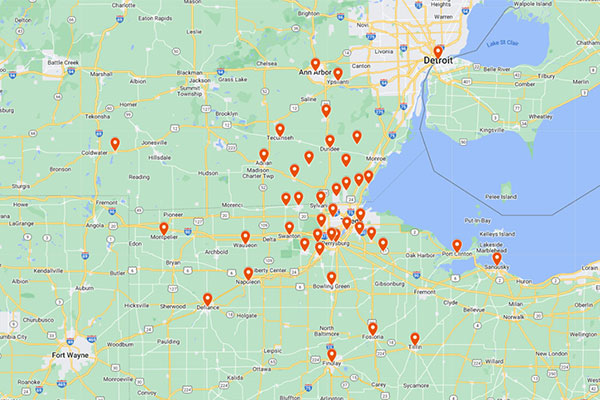Foxglove Meadow Park Ohio
Whether you are looking for a new flower to add to your garden or you are just in need of some color to brighten up your yard, the Foxglove is one of the many types of flowers available. These flower are a type of biennial plant that are re-blooming each year.
Bumblebees pollinate foxgloves
Among the many insects that pollinate foxgloves are bees. The bumblebee is a sprightly, fuzzy, and relatively large insect. They can be found throughout the United States. They prefer salt meadows and marshes. They also tend to visit vetches, red clover, and nettles. They are a sure-fire way to transfer pollen from one flower to another. They are also said to be adaptable to climate change.
The foxglove has many medicinal uses. It has been used to treat respiratory ailments. It also is a source of pharmaceuticals. The flower has five or six petals and a rounded base. The flower has a pistil which increases its chances of pollination.
The foxglove is part of the purple family. The plant has been used for centuries for medicinal purposes. It has been shown to be toxic to warm-blooded animals. It is a weed in parts of the world.
The most common visitor is the Bombus hortorum. The thorax is adorned with a double yellow band. The tail of the bumblebee is white.
Purple False Foxglove is not weedy
Despite its name, Purple False Foxglove is not a weedy plant. It is a native Florida wildflower. It is a parasitic plant, which means it gets its energy by tapping into the roots of other plants. In some parts of Florida, the plant has been used medicinally.
The False Foxglove has some important ecological roles. For one thing, it is the primary host plant for the Common Buckeye butterfly, which emerges as an adult in the fall. As a result, the False Foxglove is a critical component in the diversity of Florida’s fall wildflowers. The plant is particularly useful during the cooler nights of September, when it produces dozens of tubular-shaped flowers.
The plant also has a number of interesting native flora around it. Some of these flora include the Purple False Foxglove, the Tall Bellflower, the Clasping Venus’ Looking Glass and the Horsemint. These species all have similar attributes and they all show up in the wilds of Florida in the fall.
Foxgloves are biennial bloomers
Whether you’re looking to add a bit of color to your garden or you’re just interested in adding a beautiful border plant to your landscape, foxgloves are a great choice. They are a perennial that thrives in full sun to part shade, and they can be grown in a variety of soil types. Depending on the variety, foxgloves can live up to two years in the ground.
During the growing season, foxgloves can produce large rosettes of downy green leaves. These leaves are highly ornamental and they can be found in a wide range of colors. They’re also very hardy. They’ll survive in zones 4-8.
The original foxglove is a biennial, meaning it’ll bloom the first year. In the second year, the flowers begin to die off. This means you’ll have to replant it in the fall if you want it to continue to grow.
If you’re growing a variety of foxgloves in your garden, it’s important to keep them in a spot that gets a little bit of sunlight. It’s best to space them out at about 12 inches. You can also use individual stakes to ensure the plants don’t bend or break in the wind.
Foxglove flowerfly
During the early spring months, you may notice a Foxglove flowerfly buzzing around the park. This is a species of flowerfly that is part of the Syrphidae family. It is a large, fuzzy, insect that is sure to help transfer pollen between plants.
Foxgloves are native to Europe, and they grow well in the sun, but they can also thrive in the shade. They prefer a moist soil with a slightly acidic pH. The stems are sturdy, and can support two million seeds. They are resistant to deer, and bloom heavily in the early spring.
You can find foxglove flowers in many different colors. They are loved by hummingbirds, and are also easy to maintain. They make beautiful cut flowers. However, they are poisonous to humans. They contain cardiac glycosides, which can lead to diarrhoea and headaches.
If you would like to grow a foxglove flowerfly, you will need to have access to a sunny spot. They grow best in full sunlight, but will tolerate some light afternoon shade. You can plant them in pots, but they need to be planted in the fall, and they need to be spaced about 18 inches apart.


